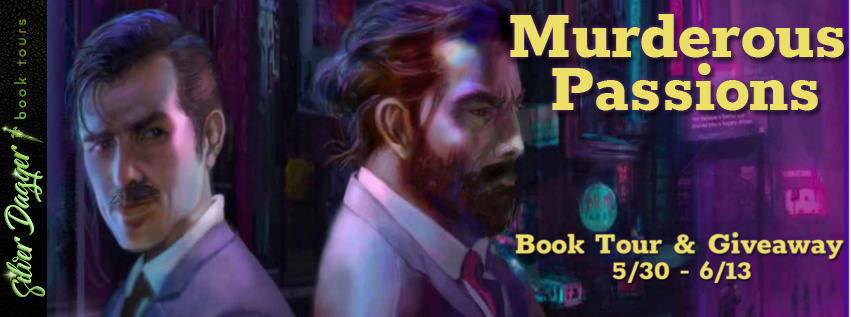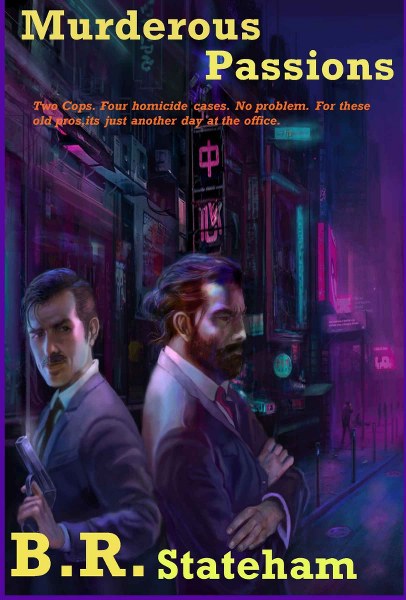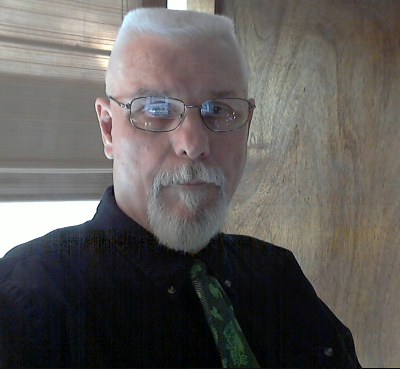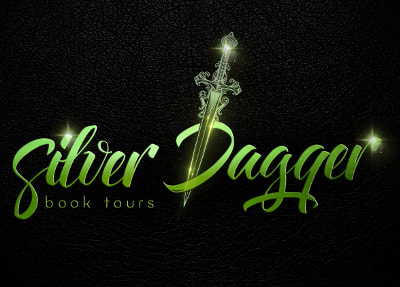Murderous Passions (The Turner Hahn/Frank Morales series) by B.R. Stateham ➱ Book Tour with Giveaway
Murderous Passions
The Turner Hahn/ Frank Morales Series Book 1
by B.R. Stateham
Genre: Detective Mystery
The first novel in the Turner Hahn/Frank Morales detective series. Two homicide detectives and old friends who take on the homicide cases no one else in the police department want to touch.
Two cops. Four homicides. One case involves a college professor and six thousand suspects. The second involves a dead farm girl, a dead gigolo, and a grieving housewife. The third is a jewel thief who likes to play with big caliber guns. The fourth involves a drug-crazed hoodlum with a killer's desire to challenge the world. It's just another working day for Detective Sergeants Turner Hahn and Frank Morales.
ONE
Murder is such an up-close and personal venue.
Especially if the weapon of choice is a garrote made with piano wire. The C-string. With wood handles carved with a craftsman’s precision to fit the end of the wires for a firm, deadly grip.
Yes. A garrote is a very intimate form of death. It requires strength. Perseverance. Patience. It’s not like shooting someone with a 9mm. Stand ten feet away. Aim at the chest. Pull the trigger and then walk away. The garrote is not mundane and pedestrian. To kill with a garrote means you must stand close to your victim. As close as two bodies intertwined in a lover’s embrace. You must stand close enough to feel the victim’s body heat. Smell the victim’s fear. Taste the victim’s blood.
It’s messy.
The victim doesn’t die by strangulation so much as by drowning. If the proper technique is used the carotid artery is severed. Blood spurts everywhere. The victim drowns in his own blood. A macabre sense of retribution. Dying by drowning in your own blood.
Yes. Garroting is very personal. Someone choosing this method meant the killer wanted to enjoy the act of snuffing someone’s life out. Like a wine connoisseur wanting to savor every passing second of a rare wine.
The victim was Dr. Walter Holdridge. The Walter Holdridge. Nobel prize winner in Physics and for the last dozen years the academic catch for our own Anderson University. The victim lay sprawled across a computer terminal in the basement of the campus’ Computer Sciences building. Very dead. Very messy. And promising to be a case which would bring an overwhelming amount of bad publicity to the university. Publicity of the unwanted kind.
Anderson University is a synonym for ‘money.’ It’s in the dictionary. Look it up in Webster’s and the number three definition will say, “Anderson University–and lots of it.” The campus is six blocks of downtown prime real estate. Sculptured lawns, big platters of well-manicured flower beds, and red brick buildings of various architectural styles which somehow blend together describes the school. It has ten thousand students and each student is in the top three percent in the nation. Smart kids. Rich kids. Money and lots of smarts.
For a cop that’s a bad combination.
What is the criteria for a good novel?
For me, a good novel is divided into two parts. First, the novel has to have a believable plot. A story has to be told. And told in a way where the reader can follow along and believe the logic in it. The plot doesn't have to be factually correct. Most readers of novels, especially crime novels, willingly allow themselves to slip into a kind of suspended animation when reading. But in that wrapping of suspended animation, the reader has to have this feeling that, no matter how insane the story line goes, it somehow follows a natural path that does not strain the realms of credulity.
The second criteria needed for a good novel is actually the most important one. A novel needs fully developed, three-dimensional characters. Heroes or villains, it doesn't matter. Each character in the novel should be concisely sculpted in as few words as possible into a fully developed human being. And it is critically important, especially in a crime novel, that the villain is as well formed, and as capable, as the hero or heroes are. There is nothing worse than reading a novel where the hero is not much better than a cardboard cut-out who does everything heroically and never misses a step. A hero with no flaws. No warts to show reluctantly to the reader. Or a villain who is all bad. With no redeeming qualities or idiosyncratic oddities about his personality which make break him for the normal mold of villainy.
The second criteria is so important that one can say truthfully many a book/series have been successful merely on the merits of the author developing interesting characters and nothing else.
How did the two main characters, Turner Hahn and Frank Morales, found in Murderous Passions, come into existence?
I've always wanted to write a 'buddy' novel. Two people who were friends and who worked well together. Each with a distinctive personality readily identifiable to the reader. Each personality possessing both strengths and and flaws. Each with their own brand of humor. Each with their own background stories.
At the same time, I frankly admit I wanted in some measure re-create the poetic beauty of a murder mystery written essentially like a Raymond Chandler novel. Many critics think Chandler was/is the epitome of master wordsmith when writing detective novels. The way he constructed his sentences and his choices of colorful descriptions cannot be matched. But one can try. Maybe one should try to mimic the master. But the use of word selection in trying to paint a mental image of one's characters in the minds of readers is both a real challenge and a real sense sense of accomplishment if done successfully.
Turner Hahn and Frank Morales popped into my mind late one night when I began writing this novel. One looked like a carbon-copy of the late great movie actor, Clark Gable. The other became a red headed monstrosity with an immense IQ. One was extremely rich and divorced. The other was married to an Italian wife and had a family with numerous children and even more numerous dogs and cats in the family fold.
Both were homicide detectives who were very good individually. But partnered together, they became stellar. I've written three novels featuring these two, one the fourth half completed. And more to come. I'm just hoping to find an audience who will agree with me they want to read as many novels as can be written featuring these two together.
Murder is such an up-close and personal venue.
Especially if the weapon of choice is a garrote made with piano wire. The C-string. With wood handles carved with a craftsman’s precision to fit the end of the wires for a firm, deadly grip.
Yes. A garrote is a very intimate form of death. It requires strength. Perseverance. Patience. It’s not like shooting someone with a 9mm. Stand ten feet away. Aim at the chest. Pull the trigger and then walk away. The garrote is not mundane and pedestrian. To kill with a garrote means you must stand close to your victim. As close as two bodies intertwined in a lover’s embrace. You must stand close enough to feel the victim’s body heat. Smell the victim’s fear. Taste the victim’s blood.
It’s messy.
The victim doesn’t die by strangulation so much as by drowning. If the proper technique is used the carotid artery is severed. Blood spurts everywhere. The victim drowns in his own blood. A macabre sense of retribution. Dying by drowning in your own blood.
Yes. Garroting is very personal. Someone choosing this method meant the killer wanted to enjoy the act of snuffing someone’s life out. Like a wine connoisseur wanting to savor every passing second of a rare wine.
The victim was Dr. Walter Holdridge. The Walter Holdridge. Nobel prize winner in Physics and for the last dozen years the academic catch for our own Anderson University. The victim lay sprawled across a computer terminal in the basement of the campus’ Computer Sciences building. Very dead. Very messy. And promising to be a case which would bring an overwhelming amount of bad publicity to the university. Publicity of the unwanted kind.
Anderson University is a synonym for ‘money.’ It’s in the dictionary. Look it up in Webster’s and the number three definition will say, “Anderson University–and lots of it.” The campus is six blocks of downtown prime real estate. Sculptured lawns, big platters of well-manicured flower beds, and red brick buildings of various architectural styles which somehow blend together describes the school. It has ten thousand students and each student is in the top three percent in the nation. Smart kids. Rich kids. Money and lots of smarts.
For a cop that’s a bad combination.
What is the criteria for a good novel?
For me, a good novel is divided into two parts. First, the novel has to have a believable plot. A story has to be told. And told in a way where the reader can follow along and believe the logic in it. The plot doesn't have to be factually correct. Most readers of novels, especially crime novels, willingly allow themselves to slip into a kind of suspended animation when reading. But in that wrapping of suspended animation, the reader has to have this feeling that, no matter how insane the story line goes, it somehow follows a natural path that does not strain the realms of credulity.
The second criteria needed for a good novel is actually the most important one. A novel needs fully developed, three-dimensional characters. Heroes or villains, it doesn't matter. Each character in the novel should be concisely sculpted in as few words as possible into a fully developed human being. And it is critically important, especially in a crime novel, that the villain is as well formed, and as capable, as the hero or heroes are. There is nothing worse than reading a novel where the hero is not much better than a cardboard cut-out who does everything heroically and never misses a step. A hero with no flaws. No warts to show reluctantly to the reader. Or a villain who is all bad. With no redeeming qualities or idiosyncratic oddities about his personality which make break him for the normal mold of villainy.
The second criteria is so important that one can say truthfully many a book/series have been successful merely on the merits of the author developing interesting characters and nothing else.
How did the two main characters, Turner Hahn and Frank Morales, found in Murderous Passions, come into existence?
I've always wanted to write a 'buddy' novel. Two people who were friends and who worked well together. Each with a distinctive personality readily identifiable to the reader. Each personality possessing both strengths and and flaws. Each with their own brand of humor. Each with their own background stories.
At the same time, I frankly admit I wanted in some measure re-create the poetic beauty of a murder mystery written essentially like a Raymond Chandler novel. Many critics think Chandler was/is the epitome of master wordsmith when writing detective novels. The way he constructed his sentences and his choices of colorful descriptions cannot be matched. But one can try. Maybe one should try to mimic the master. But the use of word selection in trying to paint a mental image of one's characters in the minds of readers is both a real challenge and a real sense sense of accomplishment if done successfully.
Turner Hahn and Frank Morales popped into my mind late one night when I began writing this novel. One looked like a carbon-copy of the late great movie actor, Clark Gable. The other became a red headed monstrosity with an immense IQ. One was extremely rich and divorced. The other was married to an Italian wife and had a family with numerous children and even more numerous dogs and cats in the family fold.
Both were homicide detectives who were very good individually. But partnered together, they became stellar. I've written three novels featuring these two, one the fourth half completed. And more to come. I'm just hoping to find an audience who will agree with me they want to read as many novels as can be written featuring these two together.
B.R. Stateham is a fourteen-year-old boy trapped in a seventy-year-old body. But his enthusiasm and boyish delight in anything mysterious and/or unknown continue.
Writing novels, especially detectives, is just the avenue of escape which keeps the author’s mind sharp and inquisitive. He’s published a ton of short stories in online magazines like Crooked, Darkest Before the Dawn, Abandoned Towers, Pulp Metal Magazine, Suspense Magazine, Spinetingler Magazine, Near to The Knuckle, A Twist of Noir, Angie’s Diary, Power Burn Flash, and Eastern Standard Crime. He writes both detective/mysteries, as well as science-fiction and fantasy.
$20 Amazon
Follow the tour HERE for special content and a giveaway!
#SeriesTour #Giveaway
with Guest Post and Excerpt
#murderouspassions #turnerhahn #frankmorales #detectivemystery #brstateham
with Guest Post and Excerpt
#murderouspassions #turnerhahn #frankmorales #detectivemystery #brstateham











Comments
Post a Comment